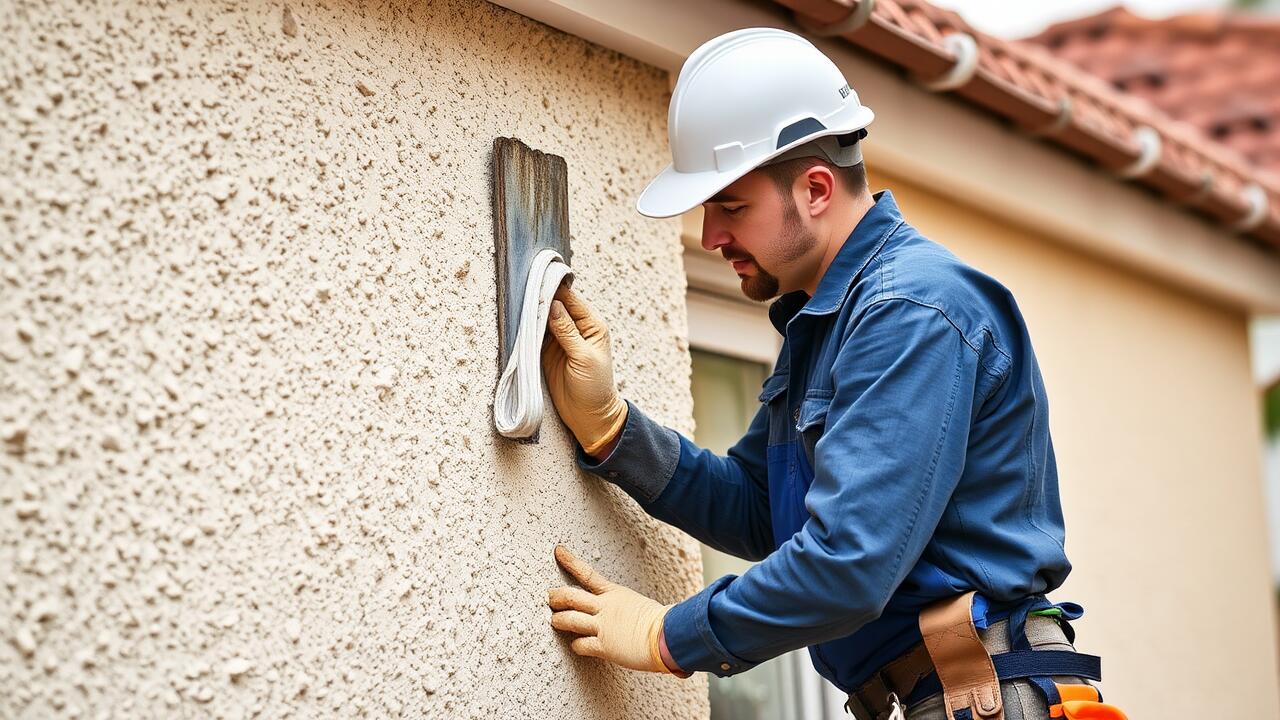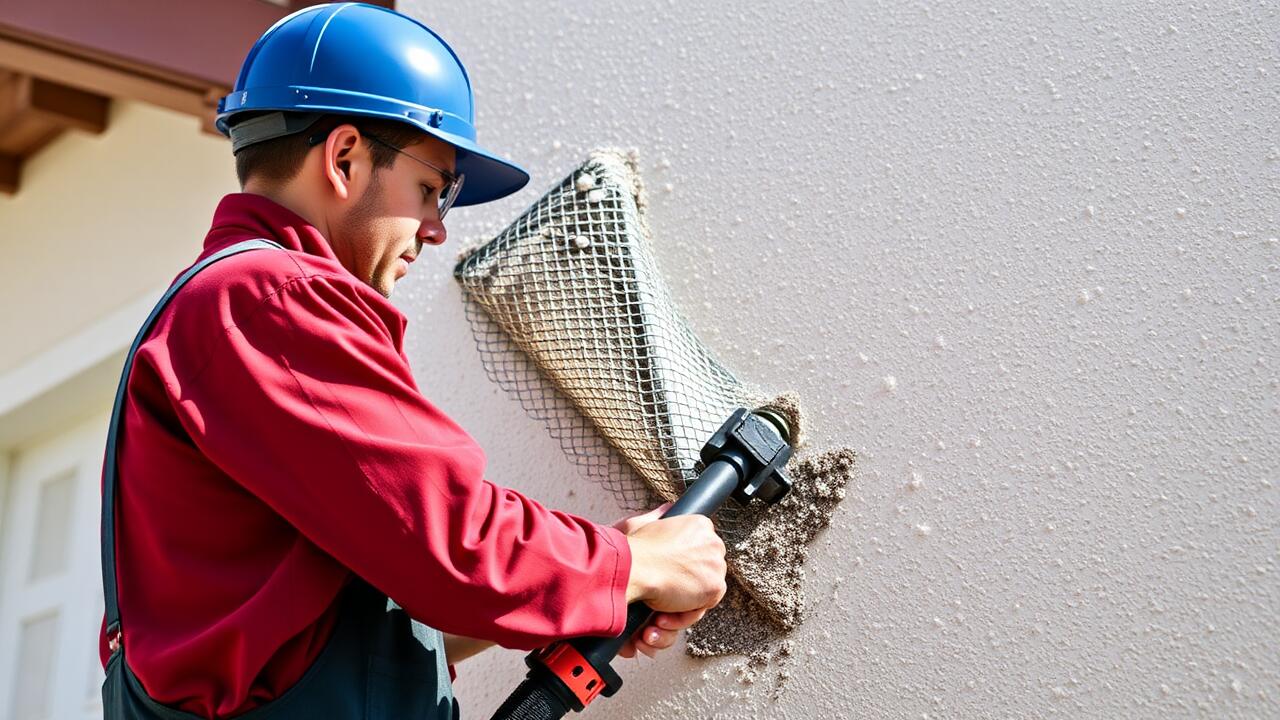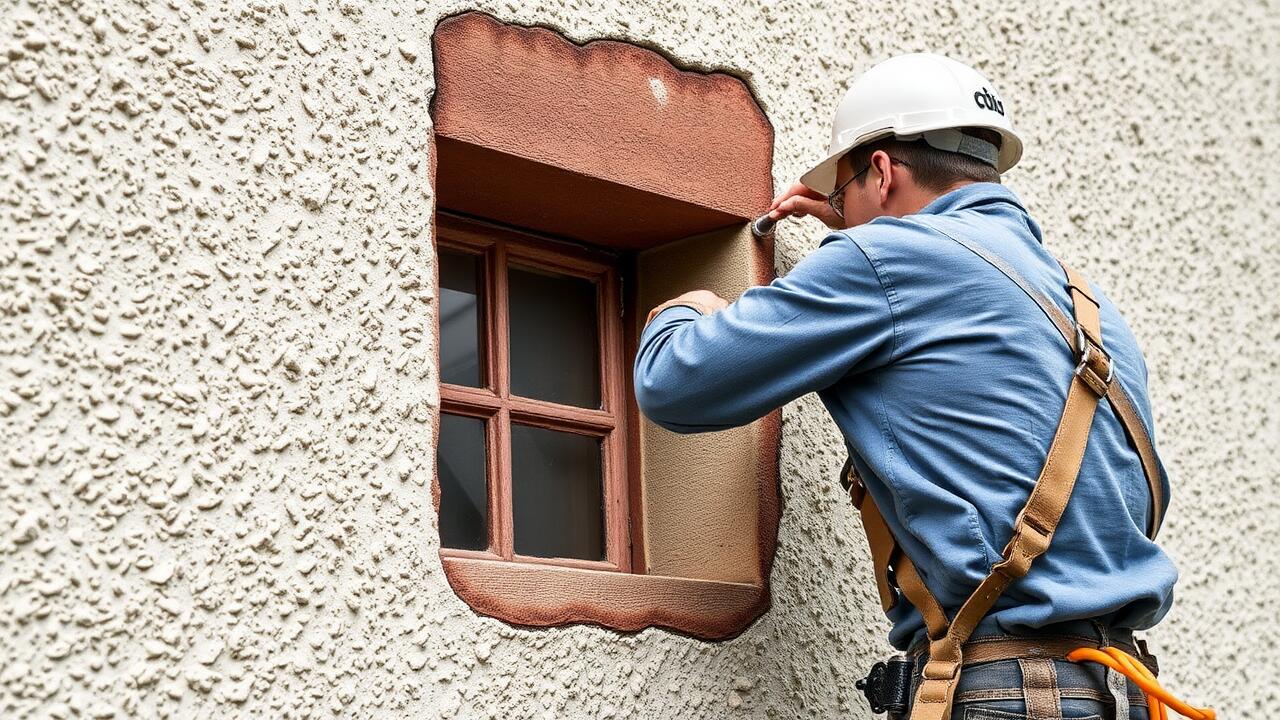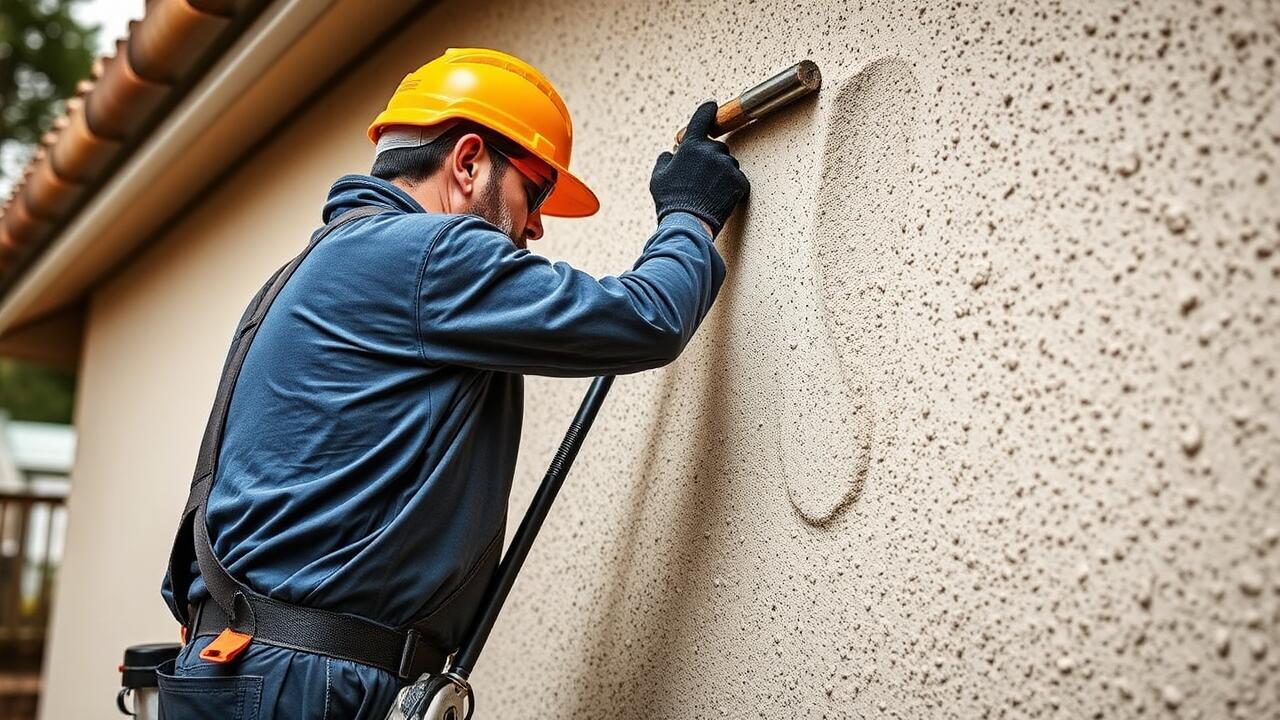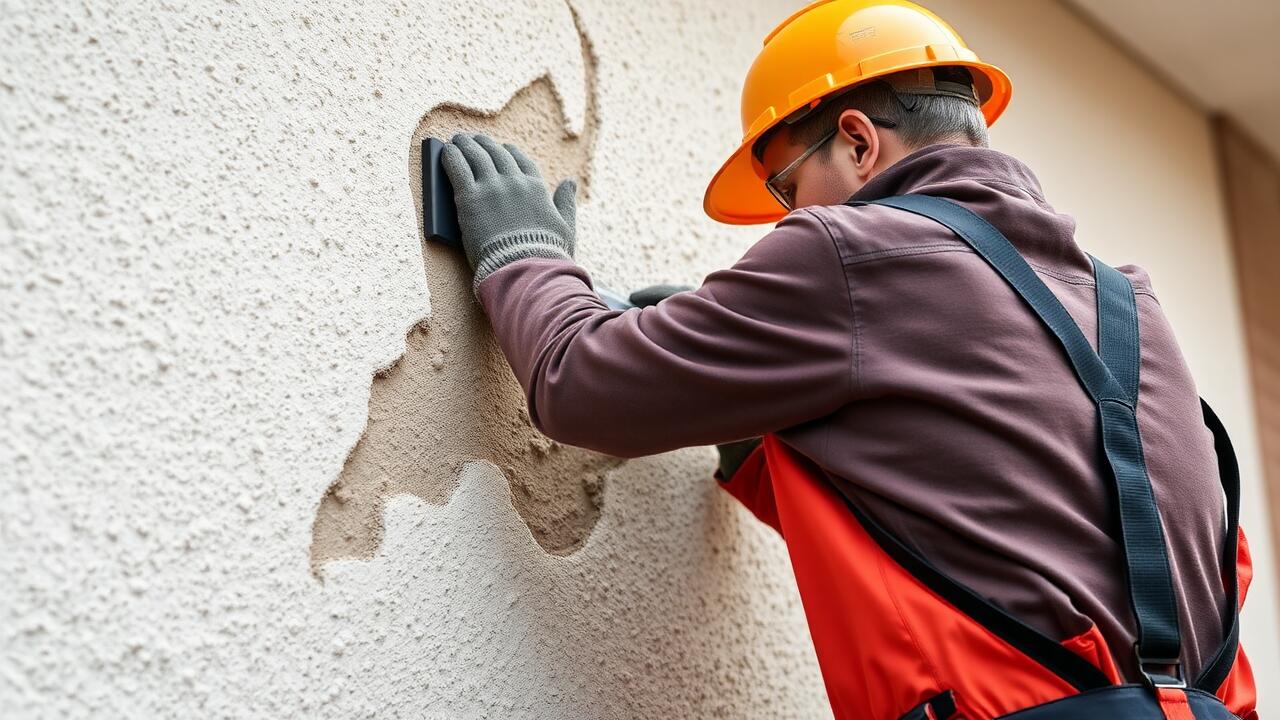
Mitigating Moisture-Related Issues
Moisture-related issues can significantly compromise the integrity of stucco. To combat these challenges, it is essential to identify vulnerabilities in the structure, such as cracks or poorly installed flashing. Homeowners should prioritize proper drainage to prevent water accumulation near stucco surfaces. Addressing these concerns early can minimize damage and extend the lifespan of the material.
In Boyle Heights, Los Angeles, stucco repair specialists play a vital role in mitigating moisture-related problems. They utilize advanced techniques and materials that enhance resistance to moisture infiltration. Regular maintenance and prompt repairs ensure that stucco remains intact and aesthetically appealing. Empowering homeowners with knowledge about the importance of moisture control will help preserve the beauty and durability of stucco installations.
Effective Repair Techniques
When addressing moisture-related damage in stucco, a thorough assessment of the affected area is crucial. Repairs often begin with identifying the source of moisture infiltration. This may involve examining roof overhangs, gutters, and potential drainage issues. Once the source is addressed, removing any compromised stucco is the next step. This allows for a clearer view of the substrate and surrounding structures. Proper surface preparation ensures that any new material adheres effectively and creates a lasting repair.
In Boyle Heights, Los Angeles Stucco Repair, applying a new coat of stucco over the repaired area can restore both functionality and appearance. The selection of materials should match the original stucco in texture and finish, promoting a seamless blend with the existing surface. Additionally, it is essential to apply sealants or waterproofing membranes if necessary to prevent future moisture entry. Following industry standards during the application process enhances the longevity of repairs and helps maintain the integrity of the structure.
The Importance of Proper Installation
Proper installation of stucco is essential to its durability and overall performance. Any mistakes made during the application process can lead to significant moisture infiltration issues over time. This not only compromises the structural integrity of the building but also promotes mold growth and deterioration. In areas like Boyle Heights, Los Angeles, where climatic conditions can vary, attention to detail in installation is particularly necessary. Using quality materials and techniques helps ensure that the stucco veneer adheres properly and can withstand the elements.
Choosing experienced contractors who understand the specific techniques required for stucco application is crucial. They should be familiar with local building codes and best practices tailored to the environmental conditions of Boyle Heights. Proper surface preparation, including adequate moisture barriers and flashings, plays a pivotal role in protecting the structure. Awareness of the importance of these factors can save homeowners from costly repairs in the future and extend the life of their stucco facades.
Best Practices for Stucco Application
Achieving a successful stucco application hinges on a few key best practices that ensure durability and aesthetic appeal. First, proper surface preparation is essential. All surfaces should be clean, dry, and free of debris to promote optimal adhesion. Additionally, applying a quality moisture barrier can significantly reduce the risk of water intrusion, an important consideration especially in regions with high humidity.
It is equally important to mix the stucco materials according to the manufacturer’s specifications. Consistency in the mixture will affect the final texture and longevity of the application. Employing skilled professionals for the application process can result in a smoother finish and less risk of cracking over time. Homeowners seeking quality workmanship may find expertise in West Adams, Los Angeles stucco repair to ensure their stucco installations withstand the test of time.
Long-Term Maintenance Strategies
Long-term maintenance of stucco requires regular inspections to identify issues before they escalate. Homeowners should examine surfaces for cracks, discoloration, or signs of moisture intrusion. Addressing these problems promptly can prevent significant damage and costly repairs. Engaging professionals who specialize in areas like Boyle Heights, Los Angeles stucco repair can provide peace of mind and ensure work is done correctly.
Consistent upkeep is essential to extend the life of stucco exteriors. Cleaning the surfaces to remove dirt and mold can help maintain their appearance and integrity. Reapplying sealants periodically also enhances moisture resistance. Focusing on these maintenance strategies not only preserves aesthetic appeal but also supports the structural soundness of the stucco.
Regular Inspections and Upkeep
Regular inspections play a crucial role in maintaining the integrity of stucco surfaces. Homeowners should periodically check for any signs of moisture intrusion, such as cracking or peeling. Areas around windows, doors, and joints often require closer examination since these spots are more susceptible to wear. Early detection of issues can prevent costly repairs and extend the life of the stucco finish.
In Boyle Heights, Los Angeles, stucco repair specialists recommend creating a routine maintenance schedule. This includes cleaning the stucco surface to remove dirt and debris that can trap moisture. Additionally, applying a protective sealant every few years can enhance durability. Staying proactive in these maintenance efforts ensures that the stucco continues to perform well and remains visually appealing over time.
FAQS
What are the common signs of moisture damage in stucco?
Common signs of moisture damage in stucco include cracks, discoloration, peeling, mold growth, and efflorescence, which appears as white powdery stains on the surface.
How can I mitigate moisture-related issues in my stucco?
To mitigate moisture-related issues, ensure proper drainage, apply waterproofing measures, maintain gutters and downspouts, and conduct regular inspections to identify potential problems early.
What are some effective repair techniques for stucco damage caused by moisture?
Effective repair techniques include patching cracks with a suitable stucco repair compound, replacing damaged sections, and applying a moisture barrier to prevent future infiltration.
Why is proper installation important for stucco?
Proper installation is crucial for stucco because it ensures that the material adheres correctly, allows for proper drainage, and minimizes the risk of moisture intrusion, thereby preserving the integrity of the structure.
What are the best practices for stucco application to prevent moisture issues?
Best practices for stucco application include using quality materials, following manufacturer guidelines, applying a weather-resistant barrier, and ensuring adequate curing time between layers.
How often should I inspect my stucco for moisture-related issues?
It is advisable to inspect your stucco at least once a year, or after severe weather events, to check for signs of moisture damage and address any issues promptly.
